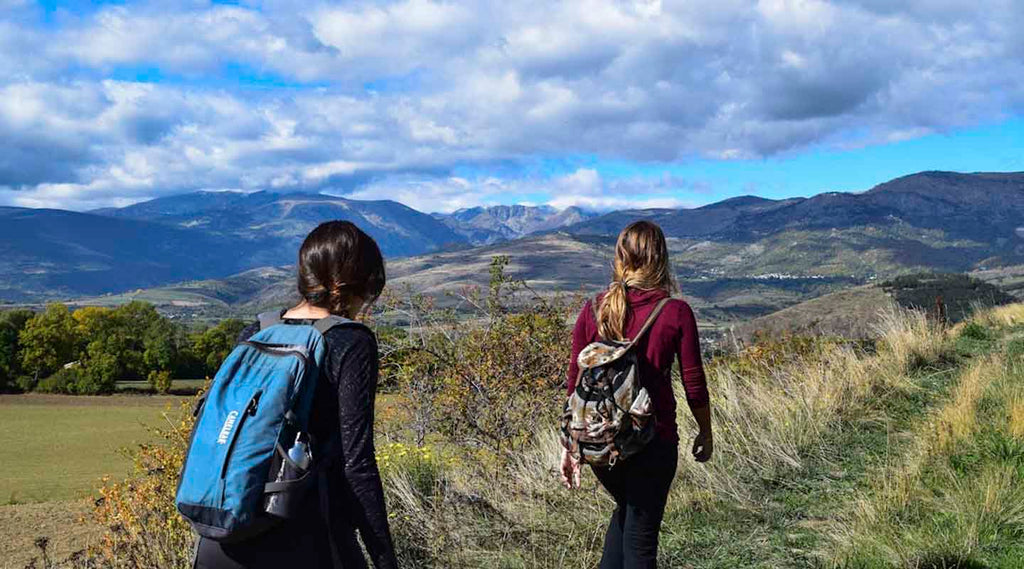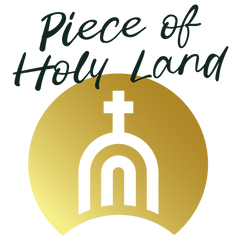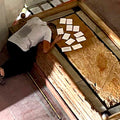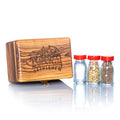Walking the Jesus Trail | Pilgrimage from Nazareth to Capernaum

Following in the Footsteps of Christ – A Journey of Faith and History
Origins and Purpose of the Jesus Trail
The Jesus Trail is a modern pilgrimage route that offers believers a tangible way to follow the ministry of Jesus. Its inspiration comes from the Gospel of Matthew, which records that Jesus “left Nazareth and lived in Capernaum by the lake”. By tracing the path between these two towns, the trail allows walkers to imagine how Jesus moved through the Galilee, teaching, healing and gathering disciples. Unlike a paved tourist road, it is a network of footpaths, village streets and ancient tracks marked by a white‑orange‑white blaze. The route is free and open to anyone willing to take the journey, and it emphasises simple travel in the spirit of Jesus’ instruction to carry little for the road. Volunteers and local communities maintain the markings and campsites, fostering an atmosphere of hospitality that echoes the welcome Jesus found in the homes of Mary and Martha.
"Leaving Nazareth, he went and lived in Capernaum which was by the lake." (Matthew 4:13)
The trail’s founders envisioned more than a hike; they wanted a spiritual and cultural bridge. The path encourages encounters between Jews, Christians, Muslims and Druze living along its course, inviting travellers to listen and learn from diverse traditions. It also serves as an ecological initiative, promoting sustainable tourism in the Galilee and encouraging hikers to appreciate and protect the landscape. Walking the Jesus Trail is not simply about reaching a destination; it is about slowing down, meeting people and letting the land itself teach lessons of faith, resilience and hospitality. For many pilgrims, it invites comparisons to other journeys of faith, such as the Camino de Santiago, while offering its own unique character rooted in the life and ministry of Jesus.
Jesus Trail

Route Overview: From Nazareth to Capernaum
The main Jesus Trail is approximately sixty‑five kilometres long. It begins in Nazareth, the hometown of the Holy Family, and ends in Capernaum, the fishing village on the Sea of Galilee that became Jesus’ base. Along the way it passes through Sepphoris, Cana, the Horns of Hattin, the dramatic cliffs of Mount Arbel, the shores of the Sea of Galilee, the multiplication site at Tabgha and the Mount of Beatitudes. Hikers usually complete the route in four days, averaging between thirteen and nineteen kilometres per day. The path can be walked independently or with a guided group; overnight options range from guesthouses and kibbutzim to simple campsites.
Each segment of the trail opens a window into biblical history. From the bustling streets of Nazareth’s Old City to the tranquil hills overlooking the lake, walkers encounter a tapestry of landscapes that shaped Jesus’ teachings. The trail’s signposts point towards both familiar stories and lesser‑known events: the first miracle at Cana, the fierce battle on the Horns of Hattin, the caves of Mount Arbel where refugees once hid, the quiet beauty of Tabgha where loaves and fish were shared, and the peaceful garden on the Mount of Beatitudes where the Sermon on the Mount echoed. While most pilgrims follow the main route, an alternate loop leads back through Tiberias, the Jordan River, Mount Tabor and Mount Precipice, offering additional opportunities for contemplation and prayer.
Day 1 – Nazareth, Sepphoris and Cana
Pilgrims begin the Jesus Trail in Nazareth, standing outside the Basilica of the Annunciation before climbing steep stairways that lead to views over the town. Nazareth is where Mary received the message that she would bear the Son of God and where Jesus spent his childhood, learning Joseph’s craft. Our detailed blog on Nazareth explores the town’s importance for Christianity and invites readers to understand Mary’s “yes” in a fresh way. Leaving Nazareth, the trail winds through orchards and olive groves to Sepphoris (Zippori), an ancient Roman city known for its mosaics and as a centre of Jewish scholarship. Though not mentioned in the Gospels, Sepphoris provides context for Jesus’ upbringing; some scholars believe that Joseph and Jesus may have worked there as builders.
Descending from Sepphoris, hikers arrive at Kafr Kanna, identified with biblical Cana. Here, according to the Gospel of John, Jesus transformed water into wine at a wedding feast, a sign that revealed his glory and deepened the faith of his disciples. Modern pilgrims can pause at the Wedding Church of Cana, renew their marriage vows or simply reflect on how Jesus honours everyday celebrations. On this first day, the trail encourages walkers to consider the humility of Nazareth, the cultural crossroads of Sepphoris and the joyful transformation at Cana, three experiences that anticipate the surprises awaiting those who follow Christ.
Wedding Church of Cana

Day 2 – Cana to Kibbutz Lavi and the Horns of Hattin
The second day of the journey leads through rolling fields and forests, past ancient terraces and modern farms. Leaving Cana, the path ascends gently toward the Jewish agricultural community of Kibbutz Lavi, whose name recalls the region’s biblical heritage. At Lavi hikers can rest and learn about kibbutz life, a modern expression of communal living that echoes the shared resources of the early church. Beyond Lavi, the trail climbs toward the Horns of Hattin, two dramatic peaks created by volcanic activity. From this high ground pilgrims enjoy panoramic views of the Galilee and the shimmering Sea of Galilee in the distance. Historically, this site was the scene of the Battle of Hattin in 1187, where Saladin defeated the Crusaders and opened the way for Muslim control of Jerusalem. Standing here invites reflection on the cycles of conquest and coexistence that have shaped the Holy Land.
Horns of Hattin

Near the base of the Horns of Hattin is the shrine of Nebi Shu’eib, revered by the Druze community as the tomb of Jethro, Moses’ father‑in‑law. Passing this holy place reminds travellers that the Jesus Trail crosses lands sacred to several faiths. The diversity of religious sites underscores the trail’s purpose as a path of encounter and dialogue. Just as Jesus spoke to Jews, Samaritans and Gentiles, modern hikers meet people from varied backgrounds who share stories, meals and blessings along the way.
Shrine of Nebi Shu’eib

Day 3 – From Kibbutz Lavi to Mount Arbel and the Cliffs of Galilee
On the third day the Jesus Trail moves from ridge to ridge, offering breathtaking vistas of valleys and villages. The path crosses fertile fields before reaching the cliffs of Mount Arbel, which tower above the western shore of the Sea of Galilee. From the summit, hikers gaze across the lake to the Golan Heights and down to the plain where the Jordan River flows into the sea. Mount Arbel’s caves have sheltered rebels and ascetics over centuries; their dark interiors speak of struggle and refuge. The steep descent from Arbel to the lake shore challenges even experienced walkers, but the reward is the verdant plain of Gennesaret at the foot of the mountain.
At the base of the cliffs the trail passes through orchards and gardens watered by springs. Here travellers begin to sense the closeness of the Sea of Galilee, the body of water where Jesus calmed storms, walked on water and called fishermen to follow him. Our in‑depth article on the Sea of Galilee delves into these miracles, its geography and its role in Jewish and Christian history. The final kilometres of day three lead through kibbutzim and small farms, offering glimpses of daily life that echo the parables of sowers, seeds and harvests.
Day 4 – Tabgha, Mount of Beatitudes and Capernaum
The last day of the Jesus Trail traces the northern shore of the Sea of Galilee. The path first reaches Tabgha, the traditional site of the miracle of the multiplication of loaves and fish. A mosaic in the Church of the Multiplication commemorates the moment when Jesus fed a vast crowd with five loaves and two fish, leaving twelve baskets of leftovers. Nearby stands the Church of the Primacy of St Peter, marking where the risen Lord cooked breakfast for his disciples and asked Peter three times, “Do you love me?” Our article on the Mount of Beatitudes, Tabgha and Bethsaida explores these miracles and their spiritual lessons.
Mount of Beatitude

Continuing along the shore, pilgrims climb a gentle hill to the Mount of Beatitudes. Here Jesus delivered the Sermon on the Mount, teaching the Beatitudes that begin, “Blessed are the poor in spirit, for theirs is the kingdom of heaven.” Sitting in the shade of eucalyptus and palm trees, hikers can meditate on these words while gazing at the lake. The trail then descends to Capernaum, Jesus’ “own city” where he healed the paralytic and taught in the synagogue. Excavations reveal basalt foundations of homes and a limestone synagogue built over an earlier structure from Jesus’ time. The modern church built above the house of Peter reminds visitors that the faith community has honoured this place for two millennia.
Capernaum, The Town of Jesus

Connecting the Trail to Your Life
Not everyone can travel to Israel, but the spirit of the Jesus Trail can be carried into daily life. Reading the Gospel accounts of Jesus’ journeys, setting aside time for silence and reflection, and walking in one’s local landscape with intention can all mirror the pilgrimage experience. Bringing a piece of the Holy Land into your home through sacred items also nurtures this connection. Keeping a vial of Jordan River Holy Water invites daily remembrance of Jesus’ baptism and the cleansing grace of God. Holding an Olive Wood Cross during prayer links you to the olive trees of Galilee and the self‑giving love of Christ. These sacramentals serve as anchors for faith when the demands of everyday life threaten to sweep us away. Each time you dip your fingers in holy water or touch the smooth wood of a cross, you are reminded that you too are on a journey toward God.
Walking the Jesus Trail physically or spiritually creates space for God to speak through the land, the scriptures and the people you meet. Whether you hike all seventy kilometres or simply ponder its stages, the trail invites you to slow down, to notice the lilies of the field and the birds of the air, and to trust in the providence of the One who guides your steps.
Frequently Asked Questions about the Jesus Trail
Q: What is the Jesus Trail and how long is it?
The Jesus Trail is a modern pilgrimage and hiking route in northern Israel that traces the path Jesus may have walked during his ministry. It is approximately sixty‑five kilometres long and connects Nazareth to Capernaum, passing through many sites mentioned in the Gospels.
Q: Which biblical sites does the trail visit?
Along its course the trail visits Nazareth, Sepphoris, Cana, the Horns of Hattin, Mount Arbel, Tabgha, the Mount of Beatitudes and Capernaum. These locations are tied to events such as the Annunciation, the miracle at Cana, the Sermon on the Mount and the multiplication of loaves and fish. The route also offers views of the Sea of Galilee and opportunities to explore archaeological remains.
Q: How many days does it take to walk the Jesus Trail?
Most hikers complete the trail in four days, with each day covering roughly thirteen to nineteen kilometres. Day hikes are organised from Nazareth to Cana, Cana to Kibbutz Lavi, Kibbutz Lavi to Mount Arbel, and Mount Arbel to Capernaum.
Q: Is the trail difficult, and can families walk it?
The Jesus Trail is considered moderate in difficulty. While there are some steep ascents and descents, particularly at Mount Arbel, most of the terrain consists of rolling hills and paths through villages and fields. Families with older children or teenagers often enjoy the hike, especially when spread out over four or five days to allow for rest and exploration.
Q: When is the best time to hike the Jesus Trail?
Spring (March to May) and autumn (September to November) offer mild temperatures and blooming landscapes, making them ideal for hiking. Summer can be very hot, especially in the low‑lying areas near the Sea of Galilee, so adequate water and sun protection are essential. Winter rains may create slippery conditions on rocky sections.
Q: How should I prepare spiritually for the trail?
Spend time reading the Gospel passages associated with the sites you will visit and reflect on how Jesus’ teachings speak to your own journey. Some pilgrims like to carry a small cross or rosary, such as an Olive Wood Cross , to pray along the way. It can also be helpful to begin each day’s walk with a brief prayer, inviting God to guide your steps and open your heart to encounters on the trail.
Q: How can I connect with the Jesus Trail from home?
If travel to the Holy Land is not possible, you can still participate in the trail’s spirit by making local pilgrimages, walking in your neighbourhood or a nearby park while meditating on biblical stories. You can also bring home a bottle of Jordan River Holy Water to bless your home and remind you of Jesus’ baptism, or hold a Holy Land Olive Wood Cross during prayer as a tangible link to Galilee.
Q: Are there other pilgrimage trails in the Holy Land?
Yes. In addition to the Jesus Trail, Israel hosts the Gospel Trail and parts of the Israel National Trail, which also connect sites from biblical history. Many pilgrims choose to walk multiple routes over time, weaving together experiences at places such as the Jordan River, Mount Tabor and Jericho. Exploring these paths deepens understanding of the scriptures and the diverse landscapes of the Holy Land.
Q: What should I bring on a Jesus Trail hike?
Essential items include comfortable walking shoes, sun protection, water, snacks, a hat and layers for changing weather. A lightweight daypack helps you carry these necessities. Many pilgrims also bring a journal for reflections and a small sacred object like a cross or rosary to use in prayer. Remember that part of the trail’s appeal is its simplicity, packing light encourages reliance on God and on the hospitality of those you meet.
SHARE:






















